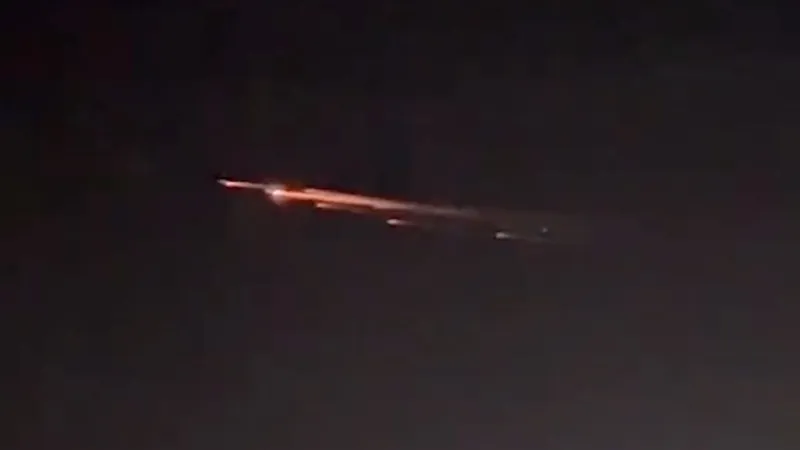
Webb Telescope Uncovers Hidden Asteroids: A Groundbreaking Discovery in Solar System Research!
2024-12-22
Author: Daniel
Introduction
In a stunning advancement for solar system studies, the James Webb Space Telescope (JWST) has unearthed a new group of small asteroids lurking within the main asteroid belt that lies between Mars and Jupiter. This exciting revelation could transform our understanding of these cosmic objects and their origins.
Discovery Details
A dedicated team from the Massachusetts Institute of Technology (MIT) leveraged Webb's remarkable infrared imaging capabilities to identify 138 new asteroids, each varying in size from roughly that of a bus to a stadium! This innovative detection method focused on the star TRAPPIST-1, allowing scientists to see objects that previously escaped notice by ground-based telescopes.
Significance of the Findings
Why is this important? According to Tom Greene, an astrophysicist at NASA’s Ames Research Center and co-author of the research, these discoveries shed light on how small asteroids are formed, which likely results from collisions between their larger brethren. Understanding their potential paths is crucial because some of these asteroids could drift closer to Earth, raising questions about planetary defense strategies.
Research Methodology
The research involved an intensive analysis of over 10,000 images of TRAPPIST-1, initially taken to study planetary atmospheres, revealing faint asteroid signatures by taking advantage of how brightly they reflect infrared light. This groundbreaking technique underscores the versatility of JWST and its potential to revolutionize our understanding of asteroid belts—something ground-based observations weren't capable of achieving.
Expert Insights
Jessie Dotson, another astrophysicist at NASA, remarked, "Understanding these smaller main belt asteroids provides vital context for studying near-Earth objects, which are crucial for planetary defense." This knowledge enhances NASA's efforts through the Planetary Defense Coordination Office, as it models the risks of potential asteroid collisions with Earth and plans strategies to mitigate their impacts.
Future Prospects
Not stopping there, NASA has ambitious plans to expand its use of infrared technology further with the upcoming Near-Earth Object (NEO) Surveyor mission, which will specifically target asteroids and comets that could endanger our planet.
Conclusion
Lead researchers Artem Burdanov and Julien de Wit from MIT are optimistic about the future implications of their work, emphasizing the importance of JWST’s capacity to detect even the faintest and most elusive objects. As they set the groundwork for subsequent studies, the door is now wide open for further exploration of asteroid dynamics and their broader implications for science and planetary safety. This landmark discovery not only enhances our astronomical knowledge but also raises urgent questions about our preparedness for potential asteroid threats. What other secrets might the cosmos be hiding? Stay tuned!




 Brasil (PT)
Brasil (PT)
 Canada (EN)
Canada (EN)
 Chile (ES)
Chile (ES)
 España (ES)
España (ES)
 France (FR)
France (FR)
 Hong Kong (EN)
Hong Kong (EN)
 Italia (IT)
Italia (IT)
 日本 (JA)
日本 (JA)
 Magyarország (HU)
Magyarország (HU)
 Norge (NO)
Norge (NO)
 Polska (PL)
Polska (PL)
 Schweiz (DE)
Schweiz (DE)
 Singapore (EN)
Singapore (EN)
 Sverige (SV)
Sverige (SV)
 Suomi (FI)
Suomi (FI)
 Türkiye (TR)
Türkiye (TR)